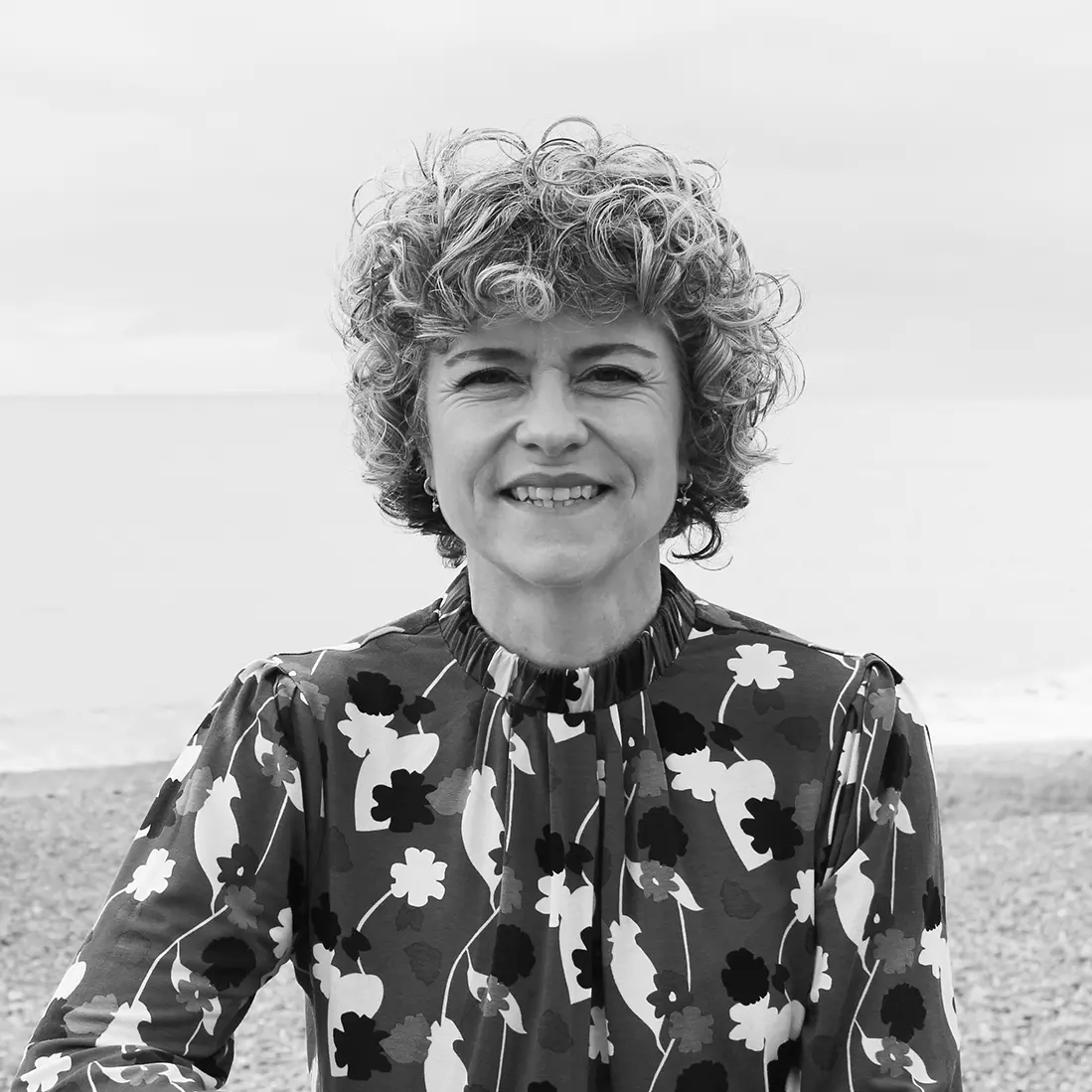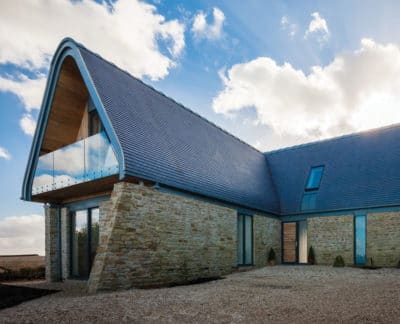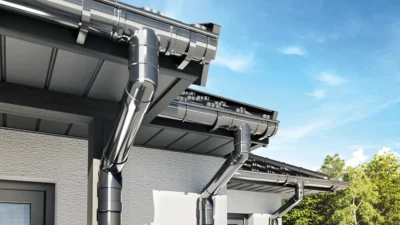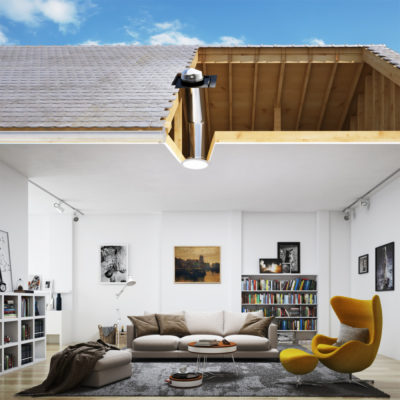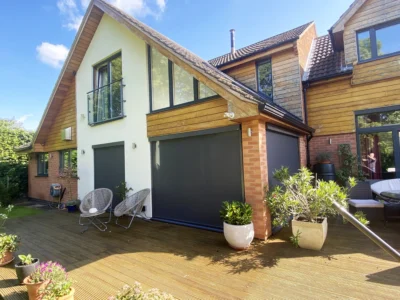Green Roofs: Everything You Need to Know About Design & Installation
There are many reasons why a green roof might be the perfect addition to your project. For instance, it could provide the answer to a tricky planning problem where the council is keen for your home to blend seamlessly into the rural surroundings.
You might be looking for an eco-roofing solution to attract insects and wildlife or want a pretty outlook onto a roof extension from your home office.
Learn more: Choosing a Green Roof System
Whatever your reasons, this feature will provide a joyous piece of nature to muse upon and create a natural habitat for birds, bees and butterflies. It will also while protect your roof, act as a natural insulator and reduce water run-off.
Green roof systems
Variations depend on the density of the soil substrate and the type of planting you incorporate. The first option is an intensive green roof.
This solution is built with a depth of 200mm+ of soil, encouraging plenty of moisture retention and nutrients for plants.
Because of this, systems are more like a garden and need to be easily accessible for maintenance. They also carry a lot of weight, so the structure of the roof must be able to support them.
However, they provide a good level of thermal protection, which means that in some cases additional roof insulation is not required. The second solution is an extensive system, featuring a layer of 80-100mm of soil and few upkeep requirements.
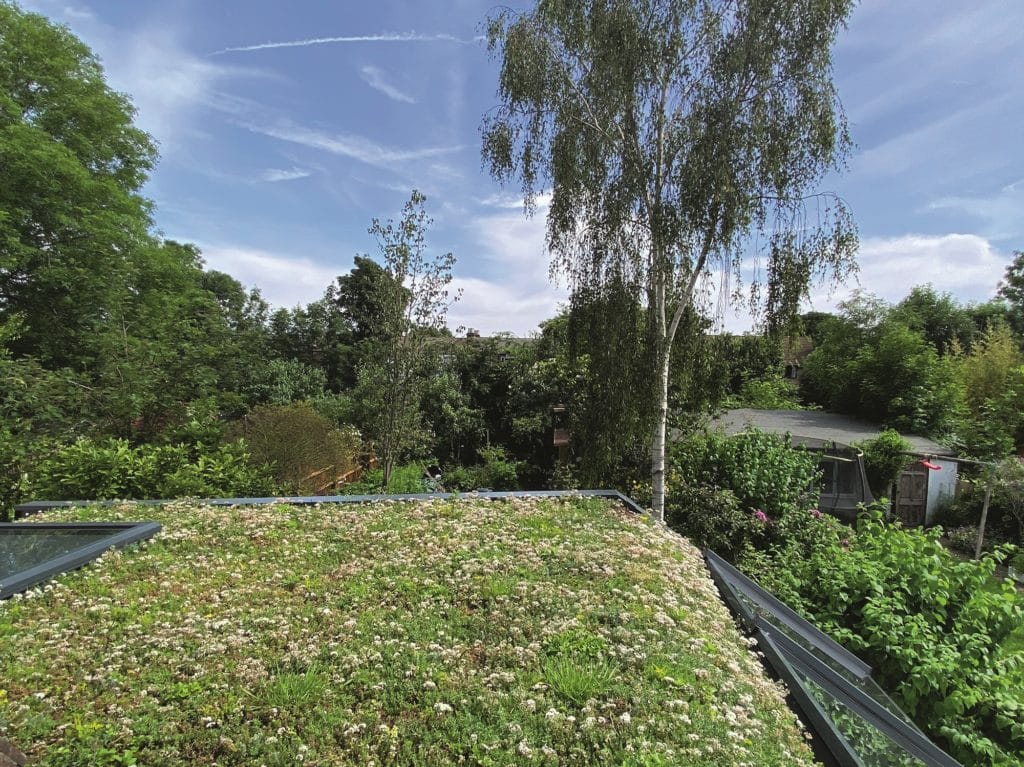
A green roof lawn on this extension provides a pleasant outlook from first floor rooms. This project was completed by Iguana Architects
The same is true of semi-extensive green roofs, which have a soil layer of 100-150mm. However, since moisture releases more slowly than the latter, it’s possible to grow more plant varieties.
Essentially, with the right structural design advice, a green roof can be any size. Plus, the more weight the roof structure can hold, the more diverse the planting. Costs vary between £60 and £250 per m2 dependent on whether you buy a whole system or individual components, do it yourself or pay an expert to install it.
Which green roof setup is right for my project?
Choice comes down to the load-bearing capabilities of an existing roof or, for a new roof, a conversation with your architect. “Some green roof systems can weigh up to 250kg per m2,” says Julian Thurbin, director of Wallbarn. “In the calculations, remember to include snow loading and wind uplift if you live in an exposed area.”
| CLOSER LOOK: FIRE SAFETY
The risk of flames occurs when plants dry out or die as the weather warms up. If there isn’t enough rainfall to keep the soil moist then you’ll need to irrigate regularly, and in autumn cut back dead plants and remove the cuttings. For fire safety, a green roof needs a pebble perimeter border of 300-500mm wide, made with 20-40mm rounded pebbles to a minimum thickness of 50mm. More information is in the Green Roof Organisation’s fire risk guidance document. |
Due to their lightweight nature, extensive systems tend to be better suited to smaller projects like a garage or shed roof, while semi-extensive green roofs can be used on bigger schemes.
For constructions with a low load-bearing capacity, take a look at the Haybase lightweight meadow solution from Organic Roofs or Sempergreen’s lightweight system. This carries a maximum saturated weight of 55kg per m2 and is suitable for pitches between 0° and 15°.
Can I install this type of covering on a pitched structure?
Green roofs are mostly designed for flat surfaces but can be used on gradients up to 10° or 15°. With the right product, however, you can install a system onto a steeper pitch. For example, Zinco’s Georaster works in scenarios up to 35°.
Sempergreen’s Steeply Pitched extensive system is suitable for angles up to 45°. “Our vegetation blankets are reinforced to make sure they stay in place,” says Rianne Slootweg, marketing manager at Sempergreen.
Can I fit a green roof myself?
The DIY approach is best suited to smaller, less complex projects, but you’ll still need to seek advice on the roof’s structural integrity. Firstly, the roof covering needs to be waterproof.
Plus, if you’re building onto an existing surface then it would be advisable to take this opportunity to upgrade the membrane itself. This layer will then be protected from weathering and UV damage by the new system you’re laying over the top.
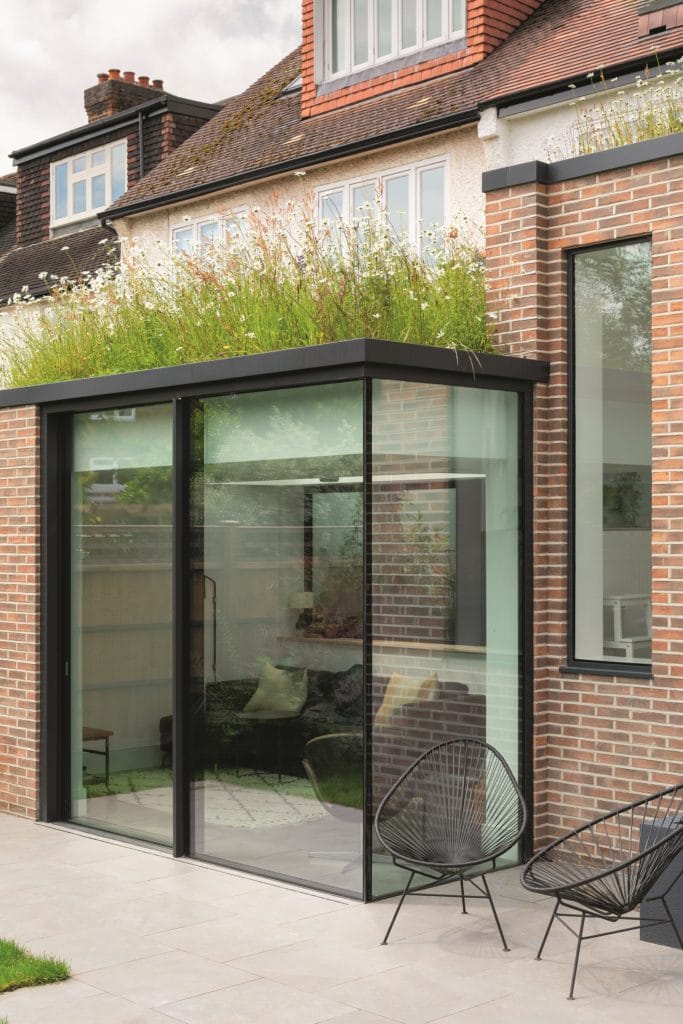
This house is set within a London conservation area. The new roof extension by Fraher Findlay reflects this in the design concept, where the green roof is planted with wildflowers. Image: Adam Scott
Although green roofs are designed to store water to feed plants, excess water needs an escape route into a drainage cavity that’s connected to a downpipe.
It’s essential to protect the roof with a durable root barrier membrane, too, and use a geotextile layer to filter out particles to prevent drains from clogging – Permaguard sell these products.
“As part of your maintenance routine, make sure you check the drains are clear, or waterlogged areas will kill the sedum,” says Julian from Wallbarn. “Surround outlets with a border of pebbles to prevent plants from invading.”
The most straightforward setups to install are modular planting trays, filled with pre-grown plants, which click together. Priced at £70 per m2, Wallbarn’s M-tray won the Build It Award for Best Roofing System or Product in 2020. Sky Garden’s modular system and Sempergreen’s Click ‘n Go Sedumtray are similar.
What kind of plants should I use?
Sedum plants are hardy in extreme conditions and provide dense coverage in soil depths of 80mm, so they are the best choice for extensive systems. Wildflowers look pretty at certain times of the year but need more soil.
Therefore, they are better suited to deeper semi-extensive and intensive systems. Plants can be bought as small plugs, which you put in yourself, pre-established in modular trays, or as pre-planted blankets that you roll out across the roof. Companies like Boningale Greensky, Habitat Aid and Sempergreen sell these.
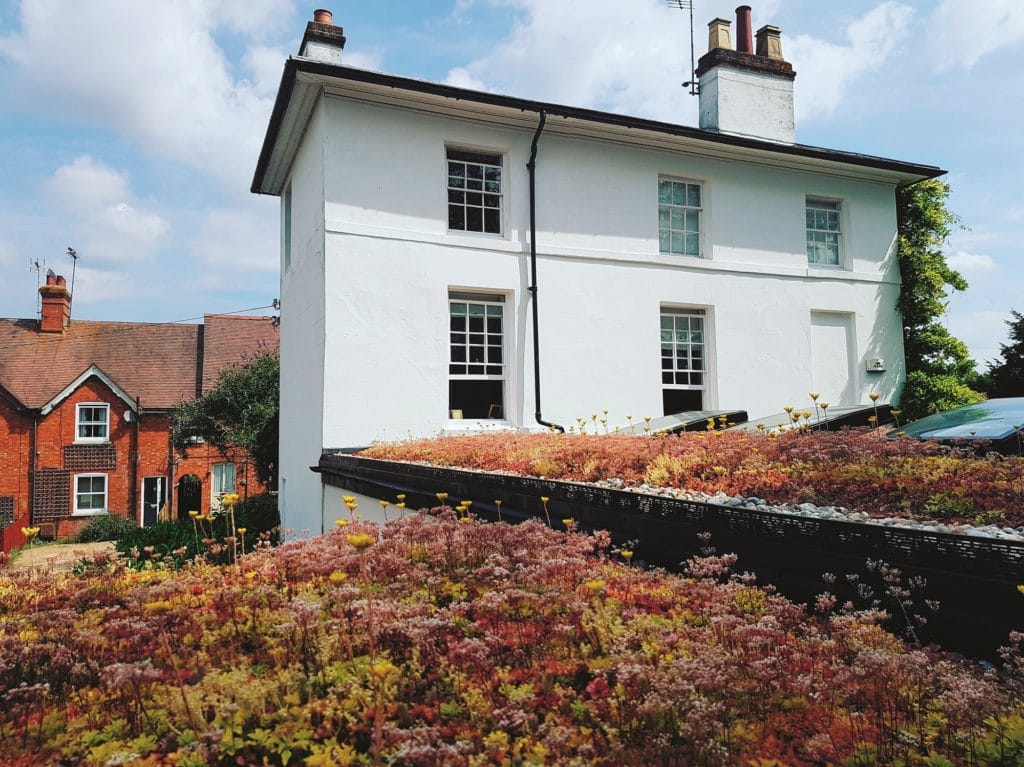
An extensive green roof by Bridgman & Bridgman, seeded with wildflowers and sedum, replaces the green space lost to the new kitchen extension in this London house
“The main consideration that’s often forgotten during the planning stage is how much of the roof is in shade, as many sedums don’t thrive in this environment,” says Maggie Fennell, product development manager at Boningale Greensky.
“Also, if you want an extensive range of plants then make sure you choose a system that can cope with a 150mm soil substrate as this widens choice, including species such as hardy alpines, herbs and coastal plants.”
Check the variety is suitable for the climate where you live, too, and install the roof in autumn or spring to help seedlings become established and ensure they thrive.
How much maintenance is involved?
This depends on the system – as mentioned previously, an intensive green roof is more like a garden so needs to be treated like one, too. All arrangements will require maintenance to some degree, such as removing dead vegetation in autumn and adding plug plants or cuttings in spring.
| SHOULD I INSTALL A BLUE ROOF?
Green roof planting absorbs rainwater, which eventually filters down into the drainage system. A blue setup goes further. This type of system counteracts flash floods from heavy stormwater with outlets that restrict and control flow into sewers and reservoirs by temporarily storing water and releasing it slowly. “A blue roof on a house is normally the result of a planning condition, perhaps in areas prone to flooding,” says Kirstin Forsythe, sales consultant at ABG. “Small blue roofs aren’t practical unless it’s a large development. In most domestic situations, a green roof is probably sufficient.” |
“It’s a good idea to fertilize then too,” says Julian from Wallbarn. “In warmer months with less rainfall, if the sedum starts to turn red, it isn’t dying but it is in distress, so make sure you can access the roof to water it. A major advantage would be to add a water source to the roof area, even if it’s only a tap fitting.”
Can I put solar panels on a green roof?
Biosolar is a setup that incorporates solar panels integrated with a green roof for the joint benefit of harnessing energy and creating biodiversity. According to Living Roofs, there are other pros of combining the two technologies, too.
Learn more: Solar PV Panels: Complete Guide to Home Solar Electricity
The panels create shade at certain times of the day, shaping variations in how plants grow and encouraging a variety of insects – ZinCo’s biosolar roofs are built with a frame with height to give the seedlings beneath enough sunlight and rain.
The structure of a green roof provides a good platform for the panels to fix to, plus the cooling effect of planting keeps the setup working optimally at around 25°C.
Biosolar is still relatively new to small scale projects so have a chat with your architect and companies like ZinCo and Bauder, who sell BioSOLAR. The Green Roof Organisation provides other useful resources, including a list of members.
Top image: This attractive setup from Boningale Greensky provides a biodiverse habitat for insects
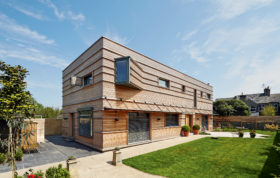
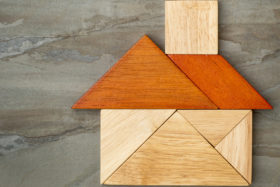















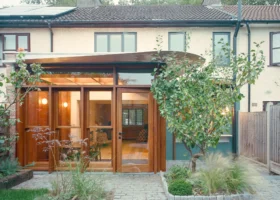

































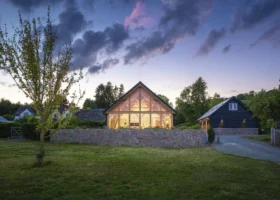













































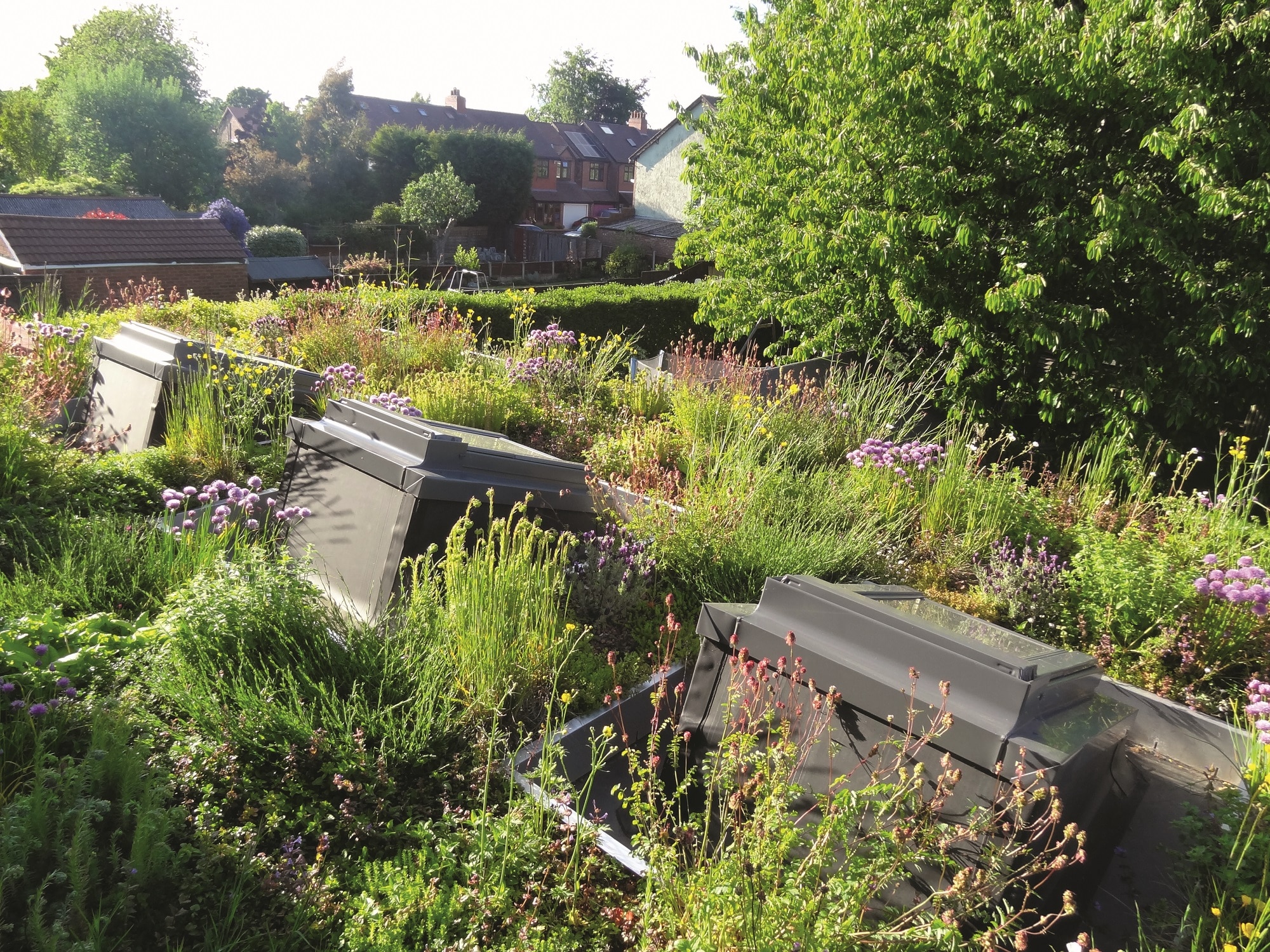
 Login/register to save Article for later
Login/register to save Article for later
